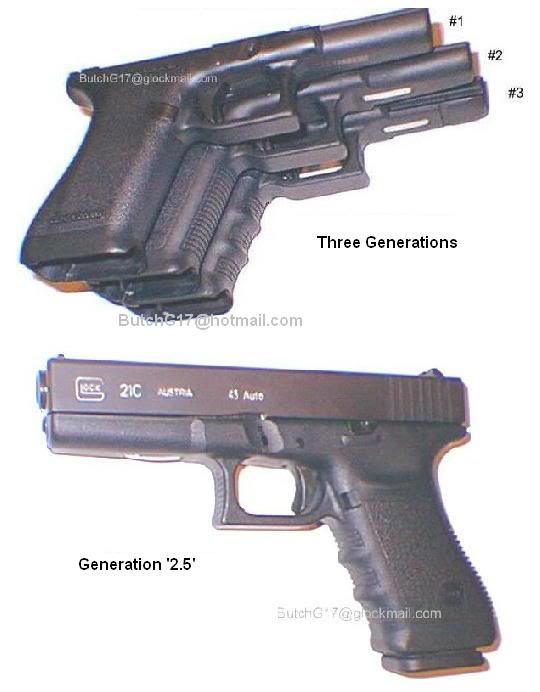Positive about that? NONE of the Sub Compact got the Tactical Rail as far I know of, since there is not enough room on the frame, so it is very well a Gen 3. Never heard of a Gen 2.5.
Well, it may not be officially a 2.5 but it is commonly referred to it that way. Did find this though.
"- 1st Generation has the smooth, rounded “pebble-grip”.
- 2nd Generation has the “Grenade-style” checkering with NO fingergrooves (see picture).
- 3rd Generation has BOTH fingergrooves AND accessory rail on the front dustcover.
- If you have a subcompact (G-26, -27, -28, -29, -30, -33, -36) OR a “transition model” when Glock was putting fingergrooves but no accessory rail, then you have a 2.5 Generation. There is even a slight variation here, as some of the earliest G-26 & G-27s had smooth fingergrooves, without checkering in-between the grooves. Some people do not count the sub-compacts as 2.5 Gen since they came out after the 3rd Gen frames were already being made. Note: newer -29, -30 are now coming with rails."




